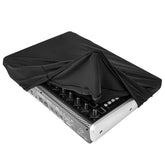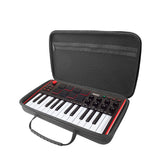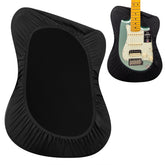Essential Guidance for Cultivating Proper Piano Hand Technique in Young Learners
by
linzz
05 Feb 2024
When children play the piano, their hand positioning is often not correct, and it can be challenging to correct or maintain the corrected posture. This is a common issue faced by almost all children learning to play the piano.
The key is to emphasize proper hand positioning training during the early stages of piano learning. Efforts should be made to prevent the formation of bad habits, thus avoiding the need to correct hand positioning errors in the future.
Children are in a period of growth and development, and their finger bones, muscles, and ligaments are very tender and lack strength. Therefore, as parents, it is important not to expect quick results in improving hand positioning. Training for the correct hand posture requires persistent mental preparation, patiently assisting the child, and consistently reminding them to maintain the proper hand shape.

During the initial learning phase, it is crucial not to rush the process. In the first three months, it is necessary to conscientiously practice each exercise at a slow pace to ensure that each finger's lifting and dropping actions receive sufficient training. This lays a solid and standardized foundation for the future piano playing.
Parents should pay special attention to supporting force training for the child's wrist, palm, and finger joints during practice sessions. Regularly check whether the palm and finger joints of the child are concave.

Therefore, we consistently advocate for slow practice. Only through slow practice can the child's brain have time to think and notice areas that need correction. Practice should continue until there are no errors, and it feels smoother before gradually increasing the playing speed.
The correct hand posture should be as follows:
Here are some methods for correcting common hand positioning errors:
The key is to emphasize proper hand positioning training during the early stages of piano learning. Efforts should be made to prevent the formation of bad habits, thus avoiding the need to correct hand positioning errors in the future.
Children are in a period of growth and development, and their finger bones, muscles, and ligaments are very tender and lack strength. Therefore, as parents, it is important not to expect quick results in improving hand positioning. Training for the correct hand posture requires persistent mental preparation, patiently assisting the child, and consistently reminding them to maintain the proper hand shape.

During the initial learning phase, it is crucial not to rush the process. In the first three months, it is necessary to conscientiously practice each exercise at a slow pace to ensure that each finger's lifting and dropping actions receive sufficient training. This lays a solid and standardized foundation for the future piano playing.
Parents should pay special attention to supporting force training for the child's wrist, palm, and finger joints during practice sessions. Regularly check whether the palm and finger joints of the child are concave.

Therefore, we consistently advocate for slow practice. Only through slow practice can the child's brain have time to think and notice areas that need correction. Practice should continue until there are no errors, and it feels smoother before gradually increasing the playing speed.
The correct hand posture should be as follows:
1. Place the hand on the piano, arch the palm, separate the five fingers, let the fingers naturally hang down, touch the keys with the fingertips, forming a semi-circular shape with the entire hand.
2. The areas where the second, third, fourth, and fifth fingers touch the keys should be the fingertips, not the finger pads. The thumb should touch the keys on the outer side of the fingertip.
3. Maintain balance in the back of the hand, avoiding tilting towards the little finger. There should be a sense of approaching towards the thumb direction.
4. Keep a semi-circular shape of the hand while playing. The fingers should not be too straight or too curved, and the first joint of the fingers must stand straight.
5. Trim the fingernails regularly to ensure the standard hand posture during playing.

Here are some methods for correcting common hand positioning errors:






